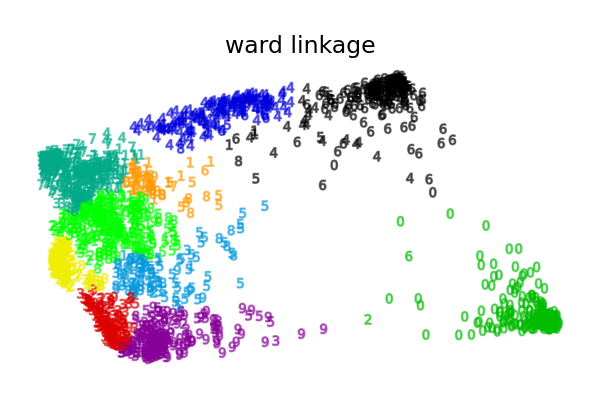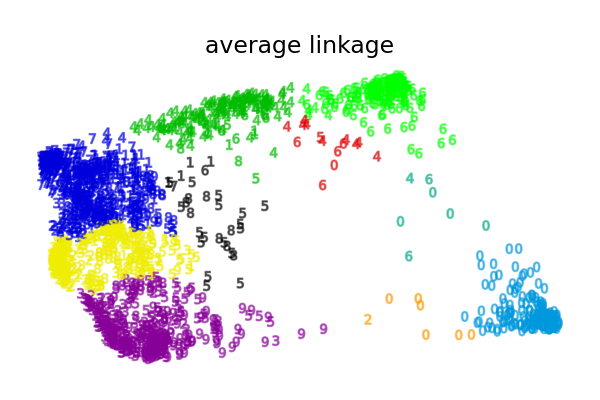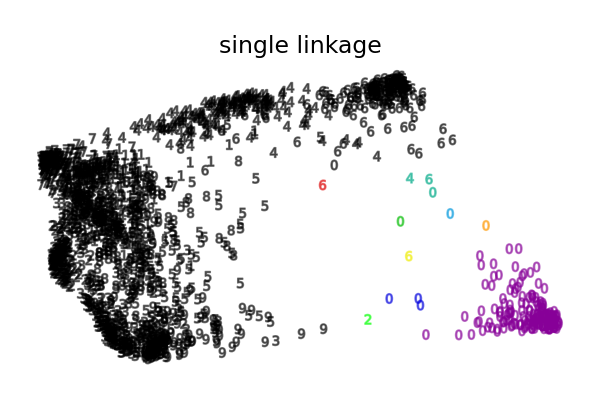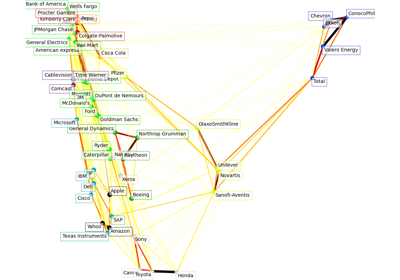Note
Go to the end to download the full example code or to run this example in your browser via JupyterLite or Binder.
Various Agglomerative Clustering on a 2D embedding of digits#
An illustration of various linkage option for agglomerative clustering on a 2D embedding of the digits dataset.
The goal of this example is to show intuitively how the metrics behave, and not to find good clusters for the digits. This is why the example works on a 2D embedding.
What this example shows us is the behavior “rich getting richer” of agglomerative clustering that tends to create uneven cluster sizes.
This behavior is pronounced for the average linkage strategy, that ends up with a couple of clusters with few datapoints.
The case of single linkage is even more pathologic with a very large cluster covering most digits, an intermediate size (clean) cluster with most zero digits and all other clusters being drawn from noise points around the fringes.
The other linkage strategies lead to more evenly distributed clusters that are therefore likely to be less sensible to a random resampling of the dataset.
Computing embedding
Done.
ward : 0.06s
average : 0.06s
complete : 0.05s
single : 0.02s
# Authors: The scikit-learn developers
# SPDX-License-Identifier: BSD-3-Clause
from time import time
import numpy as np
from matplotlib import pyplot as plt
from sklearn import datasets, manifold
digits = datasets.load_digits()
X, y = digits.data, digits.target
n_samples, n_features = X.shape
np.random.seed(0)
# ----------------------------------------------------------------------
# Visualize the clustering
def plot_clustering(X_red, labels, title=None):
x_min, x_max = np.min(X_red, axis=0), np.max(X_red, axis=0)
X_red = (X_red - x_min) / (x_max - x_min)
plt.figure(figsize=(6, 4))
for digit in digits.target_names:
plt.scatter(
*X_red[y == digit].T,
marker=f"${digit}$",
s=50,
c=plt.cm.nipy_spectral(labels[y == digit] / 10),
alpha=0.5,
)
plt.xticks([])
plt.yticks([])
if title is not None:
plt.title(title, size=17)
plt.axis("off")
plt.tight_layout(rect=[0, 0.03, 1, 0.95])
# ----------------------------------------------------------------------
# 2D embedding of the digits dataset
print("Computing embedding")
X_red = manifold.SpectralEmbedding(n_components=2).fit_transform(X)
print("Done.")
from sklearn.cluster import AgglomerativeClustering
for linkage in ("ward", "average", "complete", "single"):
clustering = AgglomerativeClustering(linkage=linkage, n_clusters=10)
t0 = time()
clustering.fit(X_red)
print("%s :\t%.2fs" % (linkage, time() - t0))
plot_clustering(X_red, clustering.labels_, "%s linkage" % linkage)
plt.show()
Total running time of the script: (0 minutes 1.491 seconds)
Related examples
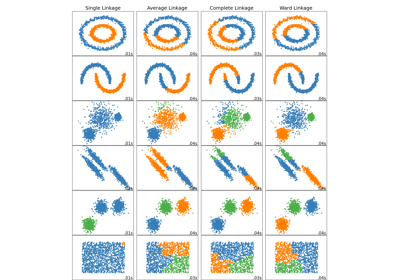
Comparing different hierarchical linkage methods on toy datasets
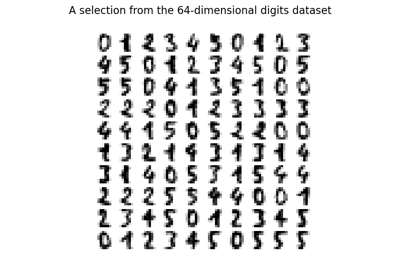
Manifold learning on handwritten digits: Locally Linear Embedding, Isomap…
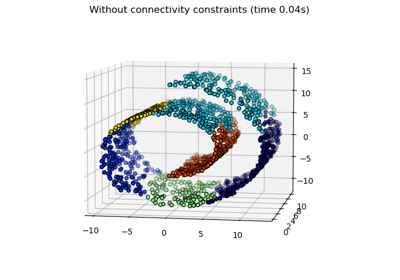
Hierarchical clustering with and without structure
